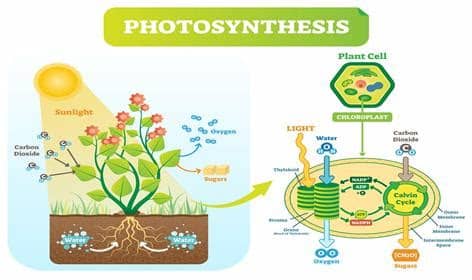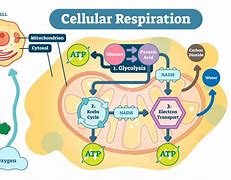AP Biology Unit 3: Photosynthesis
1/13
There's no tags or description
Looks like no tags are added yet.
Name | Mastery | Learn | Test | Matching | Spaced |
|---|
No study sessions yet.
14 Terms
Enzymes
Enzymes
Nature of Enzymes:
Mostly proteins; certain RNA molecules, known as ribozymes, can also act as enzymes, demonstrating the versatility of biological catalysts.
Function:
Catalyze biochemical reactions by lowering the activation energy required to initiate the reaction, thus increasing the rate at which reactions occur. Enzymes are crucial in metabolic processes that sustain life.
Specificity:
Enzymes exhibit high specificity due to their unique active sites that precisely fit specific substrates. This specificity is essential for ensuring that the correct reactions occur within the cell.
Active Site Characteristics:
The unique shape and charge of the active site allow it to complement the substrate, promoting a fit that facilitates the chemical reaction.
Optimum Conditions:
Enzymes function best under specific conditions, such as an optimal pH, temperature, and ion concentration, reflecting the environment in which the enzyme evolved.
Denaturation occurs when these conditions are disrupted, leading to a loss of enzyme activity as the structure is altered.
Reversible vs Irreversible Denaturation
Reversible vs. Irreversible Denaturation:
Reversible: If optimal conditions are restored, the enzyme can regain function (e.g., cooling a cooked egg).
Irreversible: Permanent loss of function occurs when the enzyme's structure is critically damaged (e.g., overcooked proteins), making it unable to catalyze reactions again.
Effects of Substrate Concentration
Effects of Substrate Concentration:
Low substrate concentrations lead to slow reaction rates. As substrate concentration increases, reaction rates also rise until the enzyme becomes saturated, at which point adding more substrate does not increase the rate further.
Inhibition
Inhibition:
Competitive Inhibition: A foreign molecule competes with the substrate for the active site, potentially decreasing enzyme activity. This can often be overcome with increased substrate concentration.
Non-competitive Inhibition: A foreign molecule binds to an allosteric site different from the active site, altering the enzyme's shape and reducing its activity even if the substrate concentration is high.
Metabolic Pathways
Metabolic Pathways:
These are series of linked enzyme-catalyzed reactions in cells, including critical pathways such as glycolysis and the Krebs cycle, which convert energy from nutrients into usable forms.
Autotrophs vs Heterotrophs
Autotrophs vs. Heterotrophs:
Autotrophs produce their own food through photosynthesis or chemosynthesis (e.g., plants as photoautotrophs, certain bacteria as chemoautotrophs).
Heterotrophs obtain energy by consuming other organisms, relying on the biochemical energy stored in organic molecules.
Reaction Types
Reaction Types:
Exergonic Reactions: Release energy, typically through catabolic pathways, such as cellular respiration, breaking down glucose.
Endergonic Reactions: Require an input of energy, seen in anabolic processes like photosynthesis, which forms glucose molecules.
ATP STructure and Function
ATP Structure and Function:
ATP, or adenosine triphosphate, consists of a ribose sugar, an adenine base, and three phosphate groups. Its molecular structure makes it a suitable energy carrier.
Energy Storage: Cells store energy derived from food/photosynthesis by adding a phosphate group to ADP to form ATP, a process driven by energy from exergonic reactions.
Energy Release: ATP releases energy by hydrolyzing one phosphate group, regenerating ADP and transforming potential energy into usable energy for cellular functions.
Energy Coupling: In cellular processes, ATP links exergonic reactions (e.g., oxidation of glucose) to drive endergonic reactions (such as ATP synthesis and muscle contraction).
Photosynthesis
Overall Process:
Photosynthesis converts light energy from the sun into chemical energy stored in glucose, releasing oxygen as a byproduct. This foundational process is vital for life on Earth as it provides energy for autotrophs and indirectly for heterotrophs.
Chemical Equation: 6 ext{CO}2 + 6 ext{H}2O + ext{light energy}
ightarrow ext{C}6 ext{H}{12} ext{O}6 + 6 ext{O}2This process is endergonic, transforming low-energy reactants (CO₂ and H₂O) into high-energy glucose.
Light Reactions:
Taking place in the thylakoid membranes of chloroplasts, light reactions convert solar energy into chemical energy in the form of ATP and NADPH. During this phase, oxygen is released as a waste product from water splitting.
Key Structures: Photosystems (I and II) engage in electron transport chains while ATP synthase facilitates ATP production through chemiosmosis.

Calvin Cycle
The Calvin cycle, also known as the light-independent reactions or dark reactions, occurs in the stroma of chloroplasts. It is a crucial part of photosynthesis that fixes carbon dioxide (CO₂) into organic molecules to form carbohydrates. This cycle consists of three main phases:
Carbon fixation: CO₂ is combined with ribulose bisphosphate (RuBP), a 5-carbon sugar, catalyzed by the enzyme ribulose bisphosphate carboxylase/oxygenase (RuBisCO), resulting in a 6-carbon intermediate that splits into two molecules of 3-phosphoglycerate (3-PGA).
Energy investment and reduction: The 3-PGA molecules are phosphorylated by ATP and then reduced by NADPH (produced during the light-dependent reactions) to form glyceraldehyde-3-phosphate (G3P), a 3-carbon sugar. This phase requires energy inputs from ATP and reducing power from NADPH.
Regeneration of RuBP: Out of every six G3P molecules produced, one G3P molecule exits the cycle to contribute to the formation of glucose and other carbohydrates, while the remaining five are used in a series of reactions to regenerate RuBP, allowing the cycle to continue. Overall, it takes six turns of the Calvin cycle to fix enough carbon to produce one molecule of glucose (C₆H₁₂O₆). The cycle plays a vital role in the biosphere as it is the main pathway for carbon fixation, helping convert atmospheric CO₂ into organic molecules that are necessary for life.

Cellular Respiration
Phases of Cellular Respiration:
Flashcard #1
Term: What are the phases of cellular respiration and their significance?
Definition: Cellular respiration consists of four main phases:
Stage 1 Glycolysis: This anaerobic process occurs in the cytoplasm and involves the conversion of one molecule of glucose (a 6-carbon sugar) into two molecules of pyruvate (a 3-carbon compound). During glycolysis, a net gain of 2 ATP molecules is produced through substrate-level phosphorylation, and 2 NADH molecules are generated by the reduction of NAD+ to NADH. Glycolysis serves as the fundamental pathway for energy extraction from glucose, enabling the cell to continue into aerobic or anaerobic pathways based on oxygen availability.
Stage 2 Link Reaction (Formation of acetyl coa): Also known as the pyruvate oxidation or the transition reaction, the link reaction occurs in the mitochondria. In this phase, each pyruvate from glycolysis is transported into the mitochondrial matrix, where it is decarboxylated (removal of CO₂) and converted into acetyl CoA. This transformation allows the two-carbon acetyl CoA to enter the Krebs cycle and represents a critical link between glycolysis and aerobic respiration.
Stage 3 Krebs Cycle: Also referred to as the citric acid cycle or tricarboxylic acid (TCA) cycle, this series of enzymatic reactions occurs in the mitochondrial matrix. The acetyl CoA combines with oxaloacetate to form citric acid, which then undergoes a cyclical series of reactions. Each turn of the cycle produces 3 NADH, 1 FADH₂, and 1 ATP (or GTP) while releasing 2 molecules of CO₂ as waste. The NADH and FADH₂ produced carry high-energy electrons to the next phase, playing a crucial role in the electron transport chain.
Stage 4 (Oxidative Phosphorylation) Electron Transport Chain (ETC): The ETC is the final phase of cellular respiration that occurs in the inner mitochondrial membrane. Here, the high-energy electrons from NADH and FADH₂ are transferred through a series of protein complexes (Complexes I-IV) and are ultimately accepted by oxygen, the final electron acceptor, forming water. As electrons move down the chain, protons are pumped from the mitochondrial matrix into the intermembrane space, creating an electrochemical gradient (chemiosmotic gradient). This gradient is then used by ATP synthase to synthesize ATP from ADP and inorganic phosphate through a process known as oxidative phosphorylation. The ETC is responsible for producing the majority of ATP (approximately 28-34 ATP molecules per glucose) in aerobic respiration.

Comparing Photosynthesis and Cellular Respiration
Comparing Photosynthesis and Cellular Respiration
Both processes involve electron transport chains that create proton gradients, leading to ATP generation via ATP synthase. They are essential for understanding cellular energy transfer and the flow of energy through life forms.
Anaerobic Pathways
Anaerobic Respiration:
Involves glycolysis followed by fermentation, which is less efficient than aerobic respiration (producing only 2 ATP compared to up to 32 ATP during aerobic conditions).
Types of Fermentation:
Alcohol Fermentation: Occurs in yeast, where glucose is converted into ethanol and CO₂, useful in brewing and baking.
Lactic Acid Fermentation: Takes place in muscle tissues under low oxygen conditions, converting pyruvate into lactic acid, allowing for energy production when oxygen levels are insufficient.
Chemiosmosis
The energy released from the electron transport chain is used to pump hydrogen ions across the inner mitochondrial membrane from the matrix into the inter-membrane space.
The pumping of hydrogen ions into the inter-membrane space creates a pH gradient, or proton gradient.
The hydrogen ions really want to diffuse back into the matrix. The potential energy established in this gradient is responsible for the production of ATP.
This pumping of ions and diffusion of ions to create ATP is chemiosmosis
Overall, this process is called oxidative phosphorylation because when electrons are given up it is called “oxidation” and then ADP is “phosphorylated” to make ATP.
You’re also expected to know the following two things for the AP Biology Exam:
Every NADH from glycolysis yields 1.5 ATP and all other NADH molecules yield 2.5 ATP.
Every FADH2 yields 1.5 ATP.
You will also want to make sure you remember the major steps of cell respiration, and the outcome of each steM
Photosynthesis (Light Reactions)
The Light Reactions
When a leaf captures sunlight, the energy is sent to P680, the reaction center for photosystem II.
The activated electrons are trapped by P680 and passed to a molecule called the primary acceptor, and then they are passed down to carriers in the electron transport chain.
To replenish the electrons in the thylakoid, water is split into oxygen, hydrogen ions, and electrons. That process is called photolysis.
The electrons from photolysis replace the missing electrons in photosystem II. As the energized electrons from photosystem II travel down the electron transport chain, they pump hydrogen ions into the thylakoid lumen. A proton gradient is established. As the hydrogen ions move back into the stroma through ATP synthase, ATP is produced.
After the electrons leave photosystem II, they go to photosystem I. The electrons are passed through a second electron transport chain until they reach the final electron acceptor NADP+ to make NADPH. Photosystem I and photosystem II were numbered in order of their discovery, not the order they are used in photosynthesis.
</p>
@@The Light-Independent Reactions@@
The dark reactions use the products of the light reactions—ATP and NADPH—to make sugar.
We now have energy to make glucose, Their carbon source is CO2. Carbon fixation means is that CO2 from the air is converted into carbohydrates.
This step occurs in the stroma of the leaf. The dark reactions are also called the Calvin-Benson Cycle
Plants that live in hot climates have evolved two different ways around this:
CAM plants deal with this problem by temporally separating carbon fixation and the Calvin cycle.
They open their stomata at night and incorporate CO2 into organic acids.
During the day, they close their stomata and release CO2 from the organic acids while the light reactions run.
In contrast, C4 plants have slightly different leaf anatomy that allows them to perform CO2 fixation in a different part of the leaf from the rest of the Calvin cycle. This prevents photorespiration.
C4 plants produce a four- carbon molecule as the first product of carbon fixation and perform cyclic electron flow in the light reactions.
\